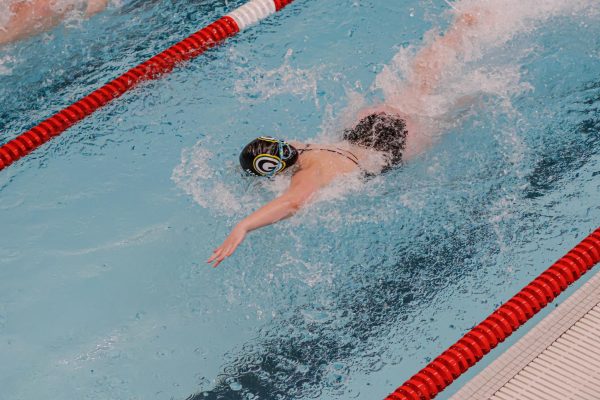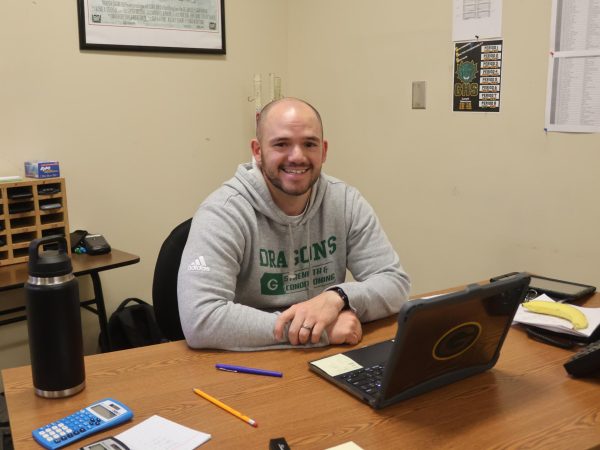Making Sense of School, Student Expenses
Costs Add Up During the Academic Year
Cars, lunch, school supplies. These are all necessities in school for most students. Whether they would want to go out to lunch with friends or travel for a school sport, it can all add up to something even larger. Being able to spend money on school items is a privilege that not everyone has.
“As a teacher, I’ve had the ability to work into high achieving and high income districts, but, that being said, within those districts there are plenty of students who live below the poverty line, and so it’s a really interesting dynamic when you have a school like Gretna,” history teacher Ms. Alice Pape said.
Depending on how far away a student lives from the school, the cost of gas can be difficult to maintain. The average cost of gas in Nebraska is $4.11 per gallon.
“I spend about $100 on clothes and shoes for the school year, and it’s a struggle to do this because it needs to last throughout the whole school year,” freshman Ava Irwin said. “Shoes alone can be around $80, so trying to get pants and shirts that are cheap with the rest of the money can be very difficult.”
School lunches have had some changes within the last year. They used to be free due to the financial impacts of COVID-19, but as of this year the price for hot lunch is $3.65. With this change, students will have to be mindful of what they spend during lunch and at the Drag n’ Go as well.
“My parents pay for lunch. Normally I just get the normal school lunch and one extra lunch per week,” freshman Mallory Suggitt said “It’s hard to make the food last throughout the day since the school lunch isn’t free anymore.”
With many students having jobs, there is a regular flow of income coming in for personal and school needs. Still, students need to be aware of how much they spend and what needs to be saved. According to minimum-wage.org, the minimum wage is at $10.50 per hour in Nebraska. Managing being a full time student with a job can be difficult when there are assignments due the next day and they are sometimes working until 10 p.m.
“You have all sorts of activities and sports open as options for you, but the question becomes ‘Will you even be able to compete in terms of funding?’ ” Ms. Pape said. “They want to do activities, but then again they’re also working multiple hours a week.”
Some students share expenses with their parents, which relieves the stress of feeling so overwhelmed. It gives students a chance to learn through different opportunities and get a few helpful tips as well. Even though most parents pay for a lot of the expenses their students have, they still have worries as far as responsibilities.
“My parents pay for after school activities. They pay for things like field trips or activities, which really helps me to be able to do the things that I love,” freshman Ruth Frezghi said.
School activities can be expensive because they need equipment, but there are payment plans that the school offers to help pay for things the activity needs. Students can talk to their principal or counselor if they are interested in this. Not all of the activities offered are expensive though. For example, football provides most of the equipment a player would need to participate, but there are still few items the individual needs to buy.
“I had to buy my costume, dress shoes and gloves, which was about $230 total and Show Choir was $600 including the costumes and admission fees,” Suggitt said.
From a teacher’s perspective, it can be difficult to see students struggle to achieve their dreams at a young age. Some students have the luxury of being able to do whatever type of school activity they would like, while others struggle with the worry of whether they can afford it or not.
“You have a wealth of students who are coming from really high income families and don’t have a worry in the world about finances, but you also have Title One schools in Gretna, which is hard to believe, which are schools that receive federal funding because they have a huge chunk of their students who live in poverty,” Ms. Pape said.
On average, students spend $231 a month according to icsid.org. With activities directly after school and multiple hours of work to be done, knowing how to create and follow a budget gives students a head start, which puts them a step ahead of those learning to be financially independent for the first time.

Abigale McQuain is a freshman at GHS and this is her first year with Gretna Media. She serves as a reporter. She is interested in journalism because she...







